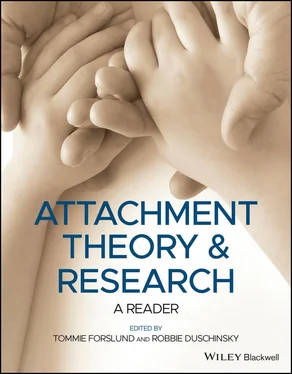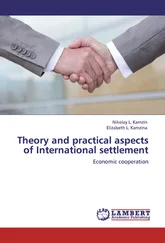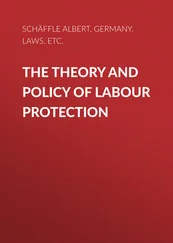Unlike some response systems, such as those relating to sexual behaviour which are sometimes activated by purely internal changes, the systems governing escape and ‘freezing’ seem almost invariably to require some external condition for their activation. Amongst those to which they appear to be naturally sensitive are loud noises, sudden visual changes (e.g. fast‐moving objects), extremes of temperature, physical pain, and mere strangeness. 11 At this elemental level of instinctual behaviour, the individual does not structure his universe into objects interacting causally to produce situations, some of which are expected to prove dangerous and others harmless. On the contrary, so long as he is operating on this level his responses are rapid and automatic. They may or may not be well adapted to the real situation. The individual flees or remains immobile not because he has any clear awareness of danger but because his flight or ‘freezing’ responses have been activated. It is because the response is automatic and blind that I regard the term ‘fright’ as better than ‘fear’ to denote its subjective accompaniment. (The word ‘fear’, it is suggested in the Appendix, may most conveniently be limited to denote the subjective state accompanying escape and ‘freezing’ whenever the cognitive component of these responses is at a higher level, namely whenever there is a clear conception of what object it is which has activated them.)
Thus far in our analysis primary anxiety and fright, though having in common the character of being automatic and blind, are conceived as very different states. Whereas primary anxiety is the subjective accompaniment of many, perhaps all, instinctual response systems when impeded, fright is the accompaniment of a couple or so of related response systems when activated. In the infancy of many species, however, special conditions operate which lead to a close connectedness between the two which I believe to be of vital importance for understanding separation anxiety. This becomes clear as soon as we examine the situations which terminate escape responses , 12 a matter usually given scant attention.
When the escape response of an animal is activated at only low intensity, mere removal from the activating conditions suffices to terminate it. This is no longer so when it is activated at high intensity. On such occasions in the natural environment animals escape not only from situations but to situations. A frightened rabbit bolts to its burrow, a fox to its earth, a band of baboons to their selected tree. Not until they have reached their preferred haven of safety do they rest. Burrow, earth, and tree are terminating situations, in each case be it noted often limited (on the principle of monotropy) 13 to a particular burrow, a particular earth and a particular tree (or group of trees). In humans the subjective accompaniment of reaching the haven of safety is a sense of security.
Young animals also escape to a situation. In their case, however, the situation is often not a place but another animal – usually the mother. This is true of individuals of many genera, from fish to primates. The human toddler escapes from a situation which has frightened him to his mother; other primate infants do the same (Harlow & Zimmerman, 1958; Yerkes, 1943). Probably for all, the haven of safety which terminates escape responses and brings a sense of security is proximity to mother . 14
Thus we find that escape responses share with crying, clinging, and following the same terminating situation. The frightened baby, it might be said, is both ‘pushed’ toward his mother by his escape responses and ‘pulled’ toward her by his clinging and following responses. This is a striking conclusion. Primary anxiety, due to the non‐termination of response systems mediating attachment behaviour, and fright, due to the activation of escape responses, are more intimately related than our initial sharp differentiation of them seemed to make likely. The question arises, even, whether the two groups of response system – namely those mediating escape and those mediating attachment behaviour – are really different. May we, instead, be dealing with the activating and terminating ends of a single group of systems? The possibility needs examination.
Reflection suggests that neither view may be adequate. In the first place, as we have seen, escape is closely linked with the very different response system of ‘freezing’. Furthermore the terminating conditions of escape are often different from those of the response systems mediating attachment; thus the mere presence of the individual in a special location, or proximity to a mate, may each prove a haven of safety. Not only is ‘freezing’ very different from the behaviour patterns of crying, clinging, and following, but to be present in a location, if not to be in the proximity of a mate, is very different from the conditions which terminate attachment behaviour. Thus it seems useful for some purposes to distinguish two sets of instinctual response systems. Nevertheless, the discussion serves to show how intricately linked, through the existence of common activating and terminating conditions, these different systems tend to be and how misleading it would be were we to make a sharp division of them into two separate groups. Indeed, the adoption of a theory of instinctual behaviour such as that advocated here enables us to get away from any notion that each ‘instinct’ is entirely distinct from every other. Instead, it provides a flexible conceptual tool which promises to do justice to the complexities of the data.
So far we have been dealing only with those subjective experiences which accompany behaviour that is still at a primitive level. As conceived here, both primary anxiety and fright are the subjective components of instinctual response systems which are activated by certain conditions (part internal and part external, part unlearned and part learned by processes of conditioning) and which operate automatically. Not until the individual can structure his universe in terms of objects existing in time and space and causally related to one another can he develop the notion of a situation which is potentially dangerous. This leads us to differentiate a new class of behaviour with its own characteristic subjective accompaniment: these I shall term respectively avoidance behaviour and expectant anxiety .
As soon as the individual, whether human infant or a member of an infra‐human species, has reached a stage of development in which some degree of foresight is possible, he is able to predict situations as dangerous and to take measures to avoid them. In this he is exercising a far more complex function that is required for instinctual responses and one which Freud habitually attributed to the ego.
At least three sorts of danger situation are distinguishable, though for reasons already given there is some overlap between them. They are:
1 Situations in which the individual believe he is likely to be assailed by external stimuli which he finds (either ‘naturally’ or through learning or both) to be disagreeable and/or noxious and which, if realized, would activate his instinctual response systems of escape and freezing.
2 Situations in which the individual believes he is likely to lose that external condition which terminates his escape responses, namely his haven of safety.
3 Situations in which the individual believes certain of his instinctual responses will be activated without conditions for terminating them being likely to be present. Some such situations are already covered under (a) or (b); an example of one which is not is the prospect of sexual arousal in the absence of conditions for satisfaction.
Читать дальше












